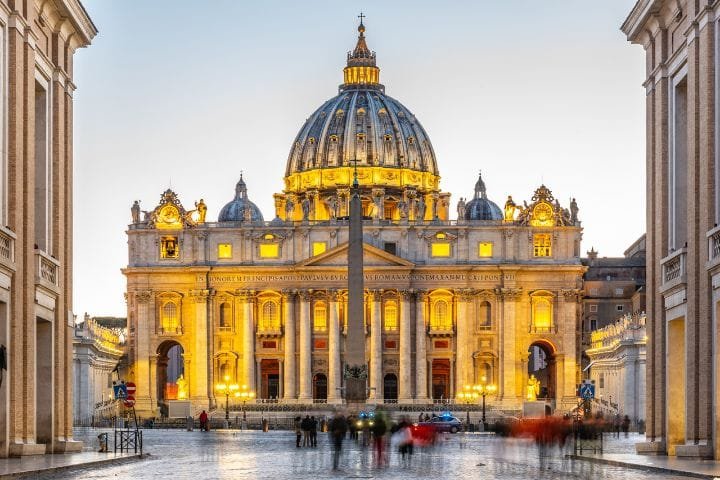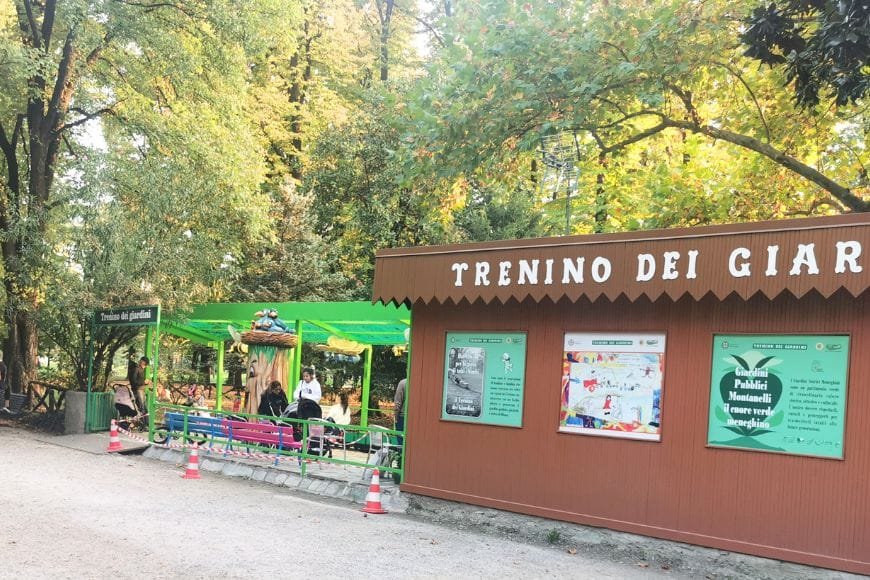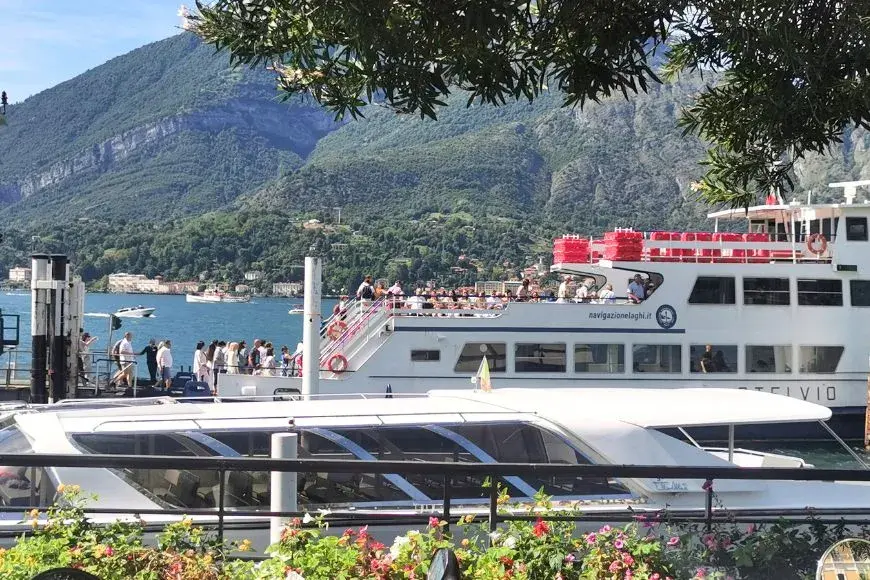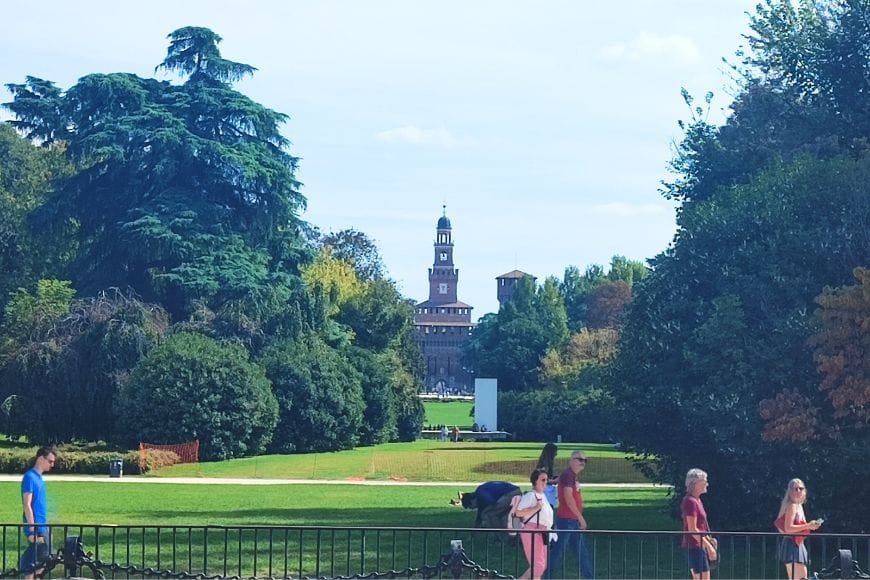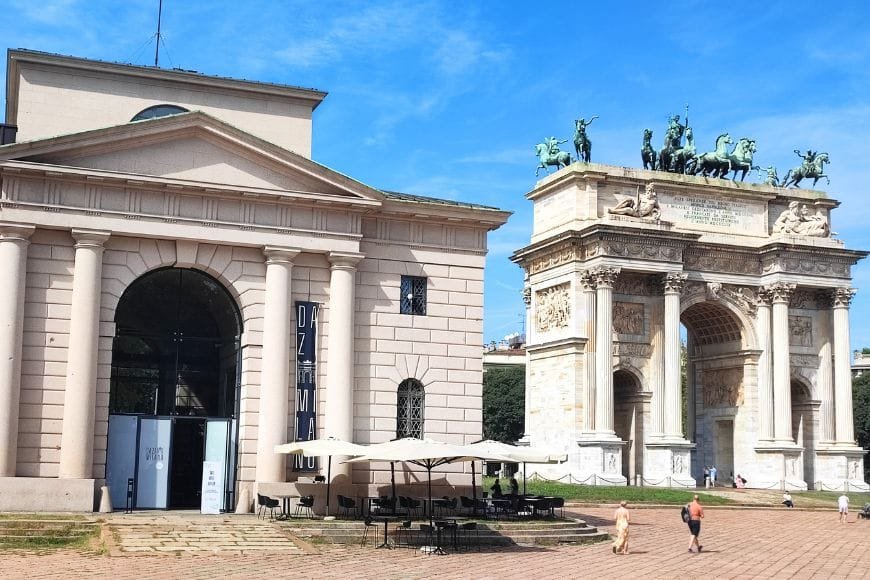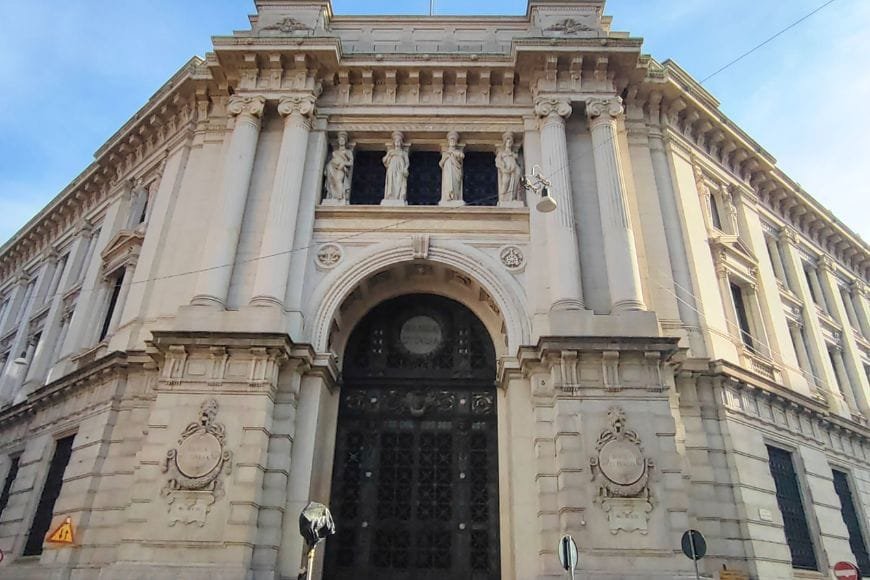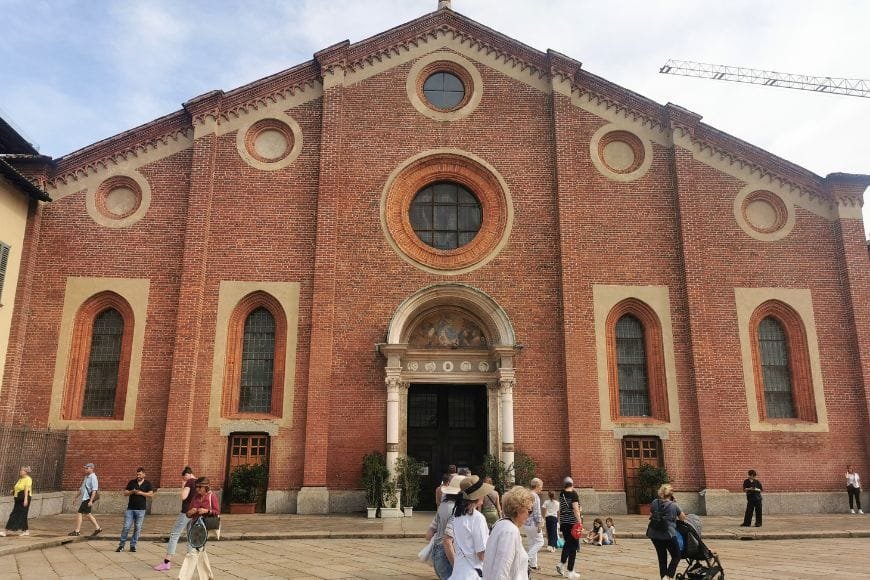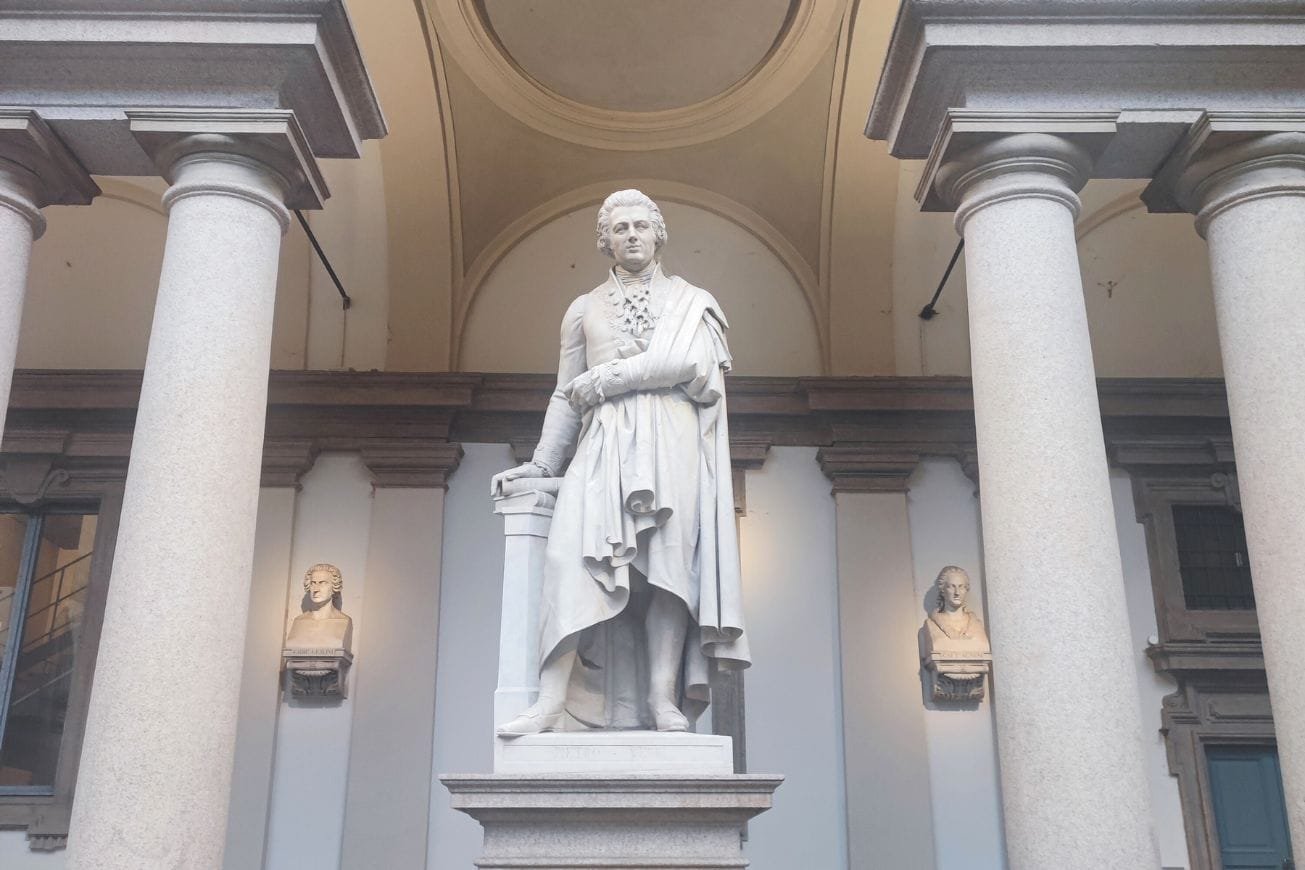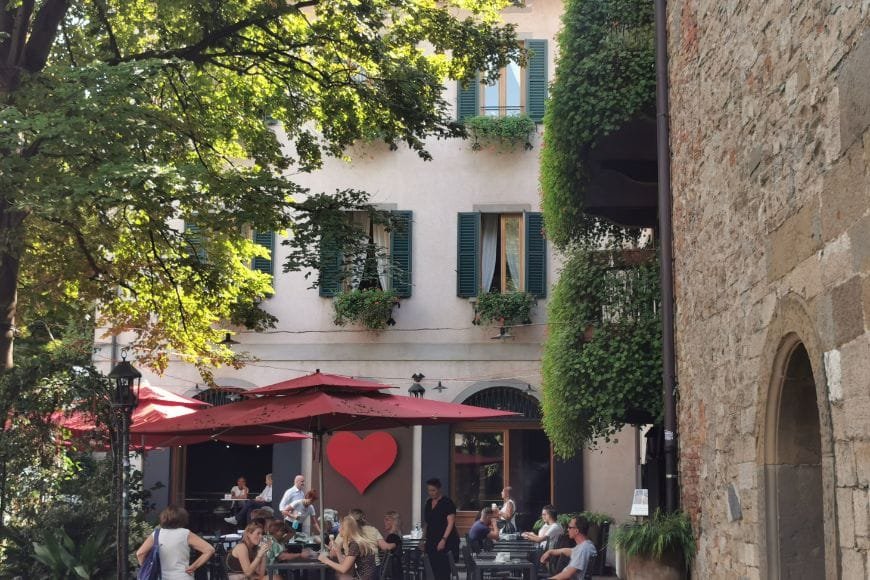Budget Milan Itinerary: How to Visit Milan on €75 a Day (2025 Guide)

by Katia | Last Updated October 9, 2025
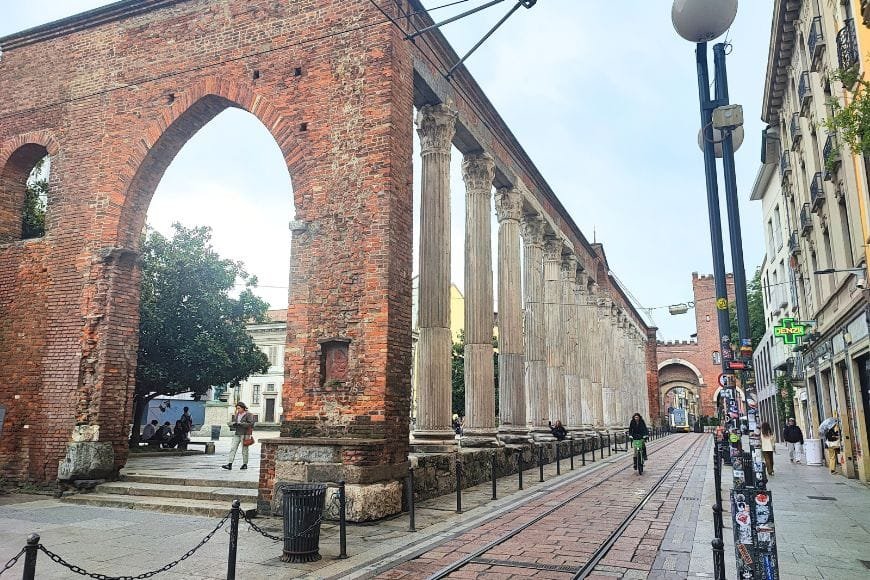
Let me tell you something that might surprise you: Milan doesn’t have to drain your bank account. Yes, it’s Italy’s fashion and finance capital. Yes, it has a reputation for being expensive. But as someone who’s lived here for years, I know exactly how to experience this incredible city without spending a fortune.
The truth? Budget Milan itinerary planning is totally doable when you know where to look. While tourists blow €300+ per day staying near the Duomo and eating at tourist traps, locals enjoy the same city for a fraction of that cost. We’re talking aperitivo buffets that replace dinner, free world-class art, stunning parks that cost nothing, and neighborhoods tourists never discover where meals cost €8 instead of €25.
In this guide, I’m breaking down exactly how to visit Milan on a budget with a realistic €75 per day plan that includes accommodation, food, transport, and attractions. You won’t be roughing it or missing the good stuff—you’ll just be traveling smart, like a local. Ready to discover cheap Milan without compromising the experience? Let’s go!
Essentials Before You Go: Plan Your Budget Milan Trip Smart
Even if you’re traveling on a tight budget, a bit of smart planning goes a long way in Milan. Here’s everything to sort out before you go 👇
🌸 Best Time to Visit Milan
Spring (April–June) and autumn (September–October) are perfect for budget travelers — mild weather, longer daylight, and fewer crowds. Winter brings cheaper hotels and festive charm; summer can be hot but still manageable if you plan indoor museum visits midday.
🎟️ Book in Advance
- The Last Supper: Must-book weeks ahead — it’s often sold out. 👉 Reserve your ticket online here
- Duomo Rooftop: Skip-the-line tickets save time and energy.
- Train & Bus Tickets: 👉 Book on Omio for cheap regional routes to Como or Bergamo.
🚋 Getting Around Milan
Milan’s historic center is walkable, and public transport is efficient. Get a 24-hour or 48-hour ATM travel pass for unlimited metro, tram, and bus rides.
👉 Planning a longer Italian trip? Find the best car rental deals on DiscoverCars — great for road-tripping to nearby lakes and towns.
🏨 Where to Stay on a Budget
Stick to budget-friendly areas like Porta Venezia, Città Studi, or Lambrate for easy metro access.
👉 Check top-rated budget hostels and hotels in Milan here
👟 What to Pack for Milan
Comfy walking shoes, a refillable water bottle, and a light layer for churches with dress codes. Bring your own reusable tote — Milan supermarkets charge for bags.
📱 Useful Apps
- Google Maps + MyMaps: For saved itinerary & offline access.
- ATM Milano Official App: For metro tickets.
- Google Arts & Culture: Preview collections & read about art for free.
💡 Personal Tip: I always mark all free spots (like parks, markets, and churches) on MyMaps before arriving — that way, I can plan each day without wasting time or data.
Is Milan Expensive? The Reality
Here’s my honest take after years of living here: Milan can be expensive if you don’t know what you’re doing. But it’s also surprisingly affordable when you understand the local tricks.
What’s genuinely expensive:
- Hotels in the historic center (€150-300/night)
- Restaurants within 500 meters of the Duomo (€15-20 for mediocre pasta)
- The Last Supper tickets (€15 + booking fee, usually sold out)
- Designer shopping districts (obviously)
- Tourist aperitivo bars charging €15-20 for drinks
What’s actually affordable:
- Hostels and budget hotels (€40-70/night if you book smart)
- Food in residential neighborhoods (€8-15 for excellent meals)
- Public transport (€7 for unlimited daily travel)
- Most churches and parks (completely free)
- Aperitivo done right (€8-12 for drink + unlimited buffet = dinner)
How Milan compares to other Italian cities: Milan sits in the middle. It’s more expensive than Naples or Bologna but cheaper than Venice and on par with Rome and Florence. The difference? Milan has better public transport and more free attractions than most Italian cities, which helps budget travelers significantly.
The Milan cost of living reality in 2025: Post-COVID inflation hit Italy hard, but Milan’s infrastructure and variety of options mean budget travelers can still find deals. You just need to know where to look—and that’s exactly what I’m here to show you.
Budget Breakdown: How €75/Day Works
Let me break down the realistic costs for budget Milan Itinerary in 2025. This isn’t some fantasy budget—this is what actually works:
Daily Budget: €75
Accommodation: €40/night
- Shared hostel dorm bed in a decent location
- Budget hotels in outer neighborhoods run €70-100 for private rooms
- Suburban hostels can be €30-35, but add transport costs
Food: €20-25/day
- Breakfast: €2-3 (coffee + cornetto at bar)
- Lunch: €6-10 (pizza al taglio, panzerotti, or supermarket picnic)
- Dinner: €8-12 (aperitivo buffet or cheap neighborhood restaurant)
- Snacks/water: €2-3
Transport: €7/day
- ATM 24-hour pass covers unlimited metro, tram, and bus
- Or walk most places and buy single tickets (€2.20) as needed
- Some days you’ll spend €0-3 just walking
Attractions: €5-8/day
- Many top sights are free
- One or two paid entries averaged over three days
- Museums have free first Sundays
Contingency: €3-5
- Emergencies, splurges, or unexpected costs
What’s included: All your basic needs—sleeping, eating, getting around, and seeing the major sights.
What’s excluded: Shopping, expensive restaurants, taxis, nightclub entry fees, and extensive souvenir buying.
How to adjust:
- Lower budget (€50-60/day): Stay in suburbs, cook hostel meals, walk everywhere, skip all paid attractions
- Higher comfort (€100-150/day): Private rooms, more restaurant meals, occasional taxi, paid museums
This €75/day target is realistic, sustainable, and still lets you have fun. You’re not eating instant noodles in your hostel—you’re experiencing real Milan smartly.
Map of the Budget Milan Itinerary
To help you make the most of your €75/day adventure, here’s a map with all free attractions, cheap eats, and budget-friendly districts pinned.
How to Use the Map
- Zoom in/out to explore neighborhoods.
- Click pins for details, addresses, and ticket info.
- Save it to your Google account to use offline during your trip.
Day 1: The Historic Center on a Budget
Daily Budget: €69
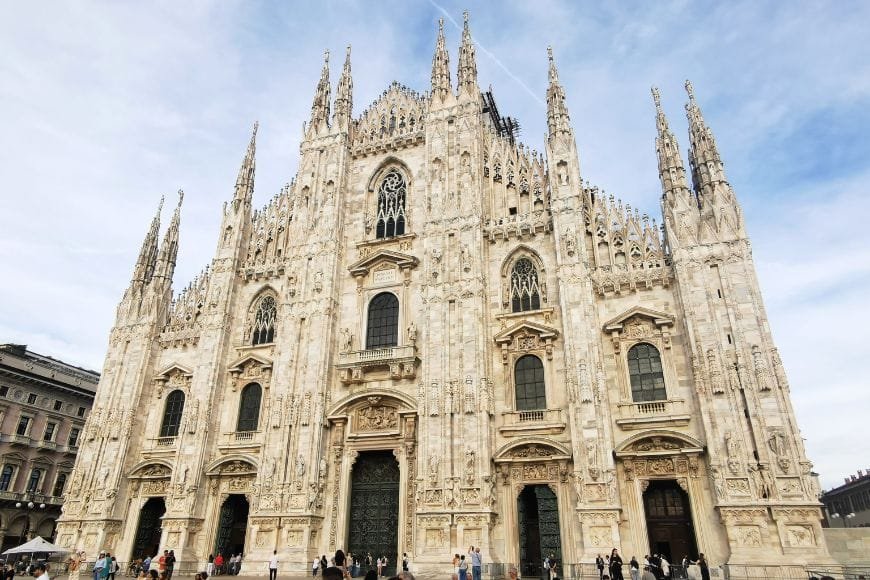
Your first day hits Milan’s iconic center—all the postcard spots—while spending almost nothing on entry fees. Here’s how I’d structure it:
Morning: Duomo & Galleria (Free)
Start at Piazza del Duomo around 9 AM before the crowds get insane. The Duomo exterior is absolutely free to admire, and honestly? The outside is more impressive than the interior anyway. The intricate Gothic facade with its 135 spires and 3,400 statues is jaw-dropping.
Skip the €25+ ticket to go inside unless you’re really into churches. The exterior experience is 90% of the magic.
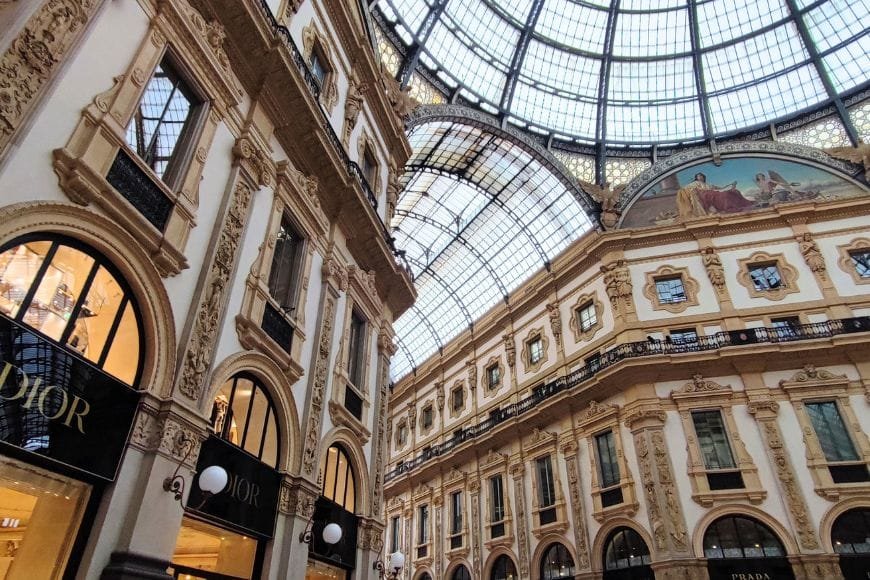
Walk through Galleria Vittorio Emanuele II—Milan’s stunning 19th-century shopping arcade. It’s free to wander, the architecture is magnificent, and yes, you can do the tourist thing of spinning on the bull mosaic for good luck (we locals find it amusing, but go ahead!).
Coffee break: Duck into a side street bar (NOT in the Galleria or Duomo square). A cappuccino and cornetto at a local bar on Via Torino or Via Dante costs €3 versus €6-8 in tourist traps. Order at the bar, consume standing up (sitting costs extra), and move on. That’s how locals do it.
Window shop the fashion district (Via Montenapoleone, Via della Spiga). You’re not buying, but the window displays are art installations and it’s a quintessential Milan experience. Completely free.
Morning cost: €3
Lunch: Pizza al Taglio (€5-8)
For lunch, grab pizza al taglio (pizza by the slice) from literally any local pizzeria away from the Duomo. Point to what you want, they weigh it and charge by weight.
Better yet, hit Luini (Via Santa Radegonda, near Duomo) for their famous panzerotti—baked or fried dough pockets stuffed with mozzarella and tomato. They’re €3.50, messy, absolutely delicious, and an authentic Milan experience. There’s usually a line, but it moves fast.
Alternative: Buy supplies at a supermarket (Carrefour, Esselunga) for €4-5 and picnic in a park.
Lunch cost: €5-8
Afternoon: Castello Sforzesco & Parco Sempione (Free)
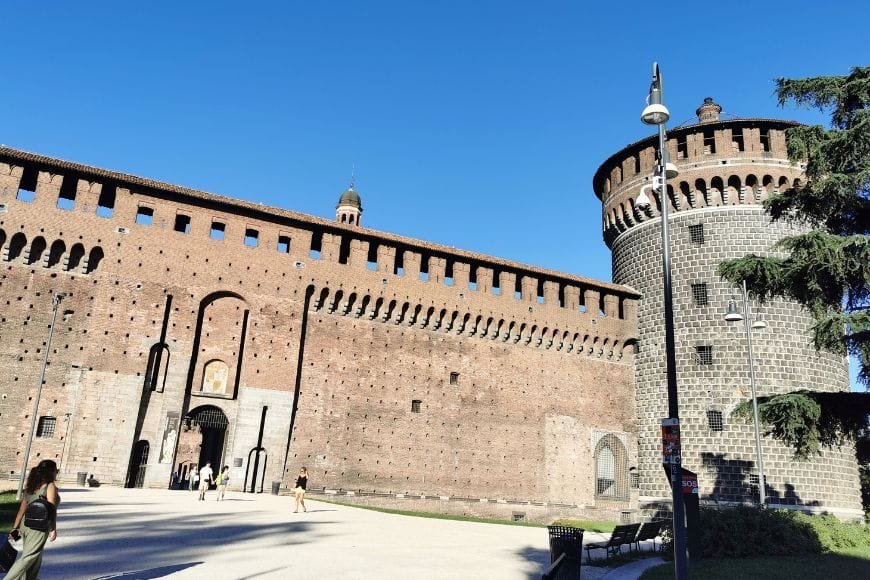
Walk to Castello Sforzesco (about 15 minutes from Duomo, or take metro M1/M2 to Cadorna). The castle exterior and courtyards are completely free to explore. The paid museums inside (€5) are skippable unless you’re really interested—the Michelangelo Pietà is nice, but not essential.
Spend the afternoon in Parco Sempione, Milan’s central park behind the castle. It’s huge, beautiful, and free. Walk to the Arco della Pace (Peace Arch) at the far end—spectacular and great for photos.
Torre Branca (the observation tower in the park) costs €6 if you want city views, but honestly, you can skip it and save money. The views from Castello Sforzesco terraces are free and nearly as good.
Afternoon cost: €0-6
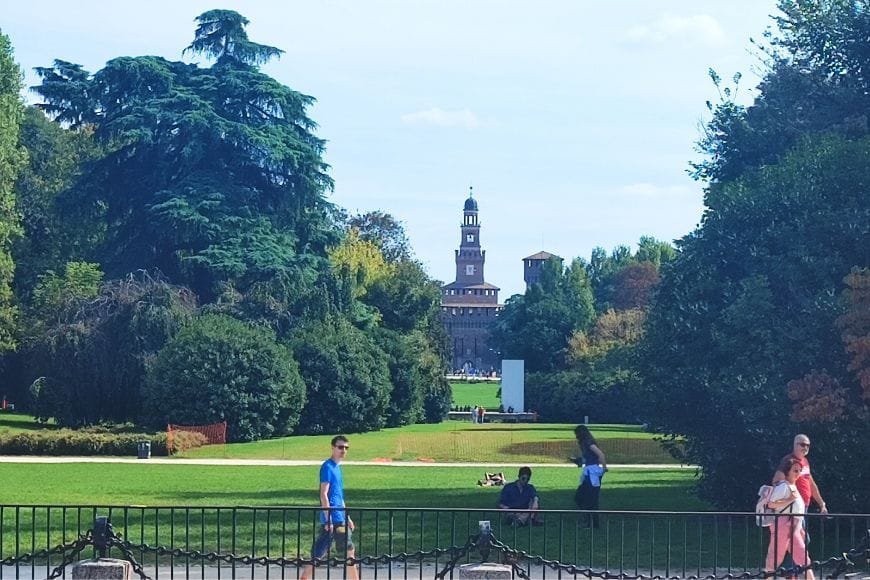
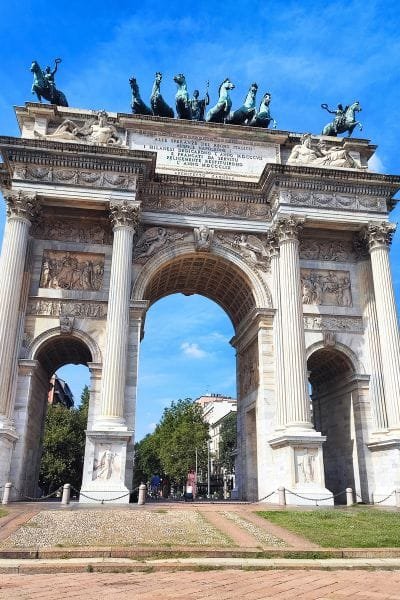
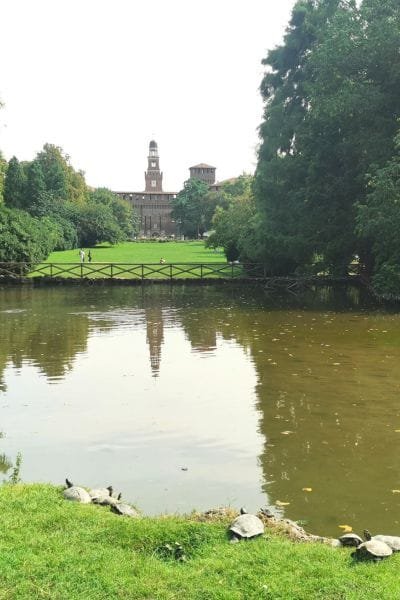
Evening: Navigli & Aperitivo (€8-12)
Take metro M2 to Porta Genova and walk to the Navigli district—Milan’s canal area that comes alive in the evening. Walking the canals is free and the atmosphere is wonderful.
Now here’s the budget traveler’s secret weapon: aperitivo. This Milanese tradition (6:30-9 PM) means you order one drink (€8-12) and get access to an unlimited buffet. The food ranges from decent to excellent depending on the bar, but it’s always enough to constitute dinner.
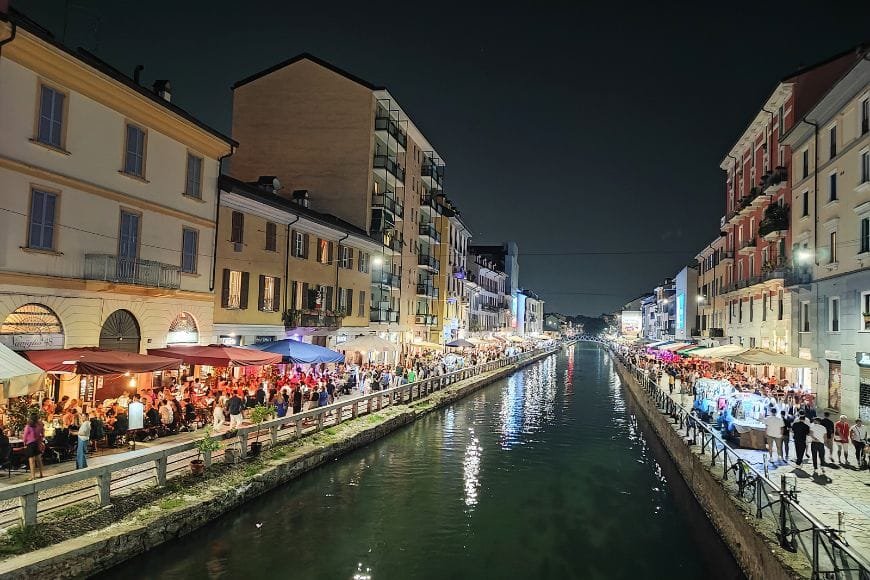
My budget aperitivo picks in Navigli:
- Bar Rita (Ripa di Porta Ticinese): Great buffet, local crowd, €8-10 drinks
- Ugo (Alzaia Naviglio Grande): Generous spread, €10-12 drinks
- Cantina Della Vetra (Via Pio IV): More wine bar vibe, cheese and charcuterie, €10
Make one drink last 1-2 hours, eat from the buffet (don’t pile your plate ridiculously, but you can go back), and you’ve had dinner for €8-12. This is how locals do it.
Evening cost: €8-12
Day 1 Total: €69
- Accommodation: €40
- Food: €16-23
- Transport: €7 (day pass)
- Attractions: €0-6 (if you skip Torre Branca)
You’ve seen the Duomo, fashion district, castle, park, canals, and experienced aperitivo culture—Milan’s greatest hits—while spending next to nothing!
Day 2: Hidden Neighborhoods & Local Life
Daily Budget: €67
Day two takes you off the tourist trail into neighborhoods where real Milanese live and where prices drop significantly.
Morning: Brera District (Free)
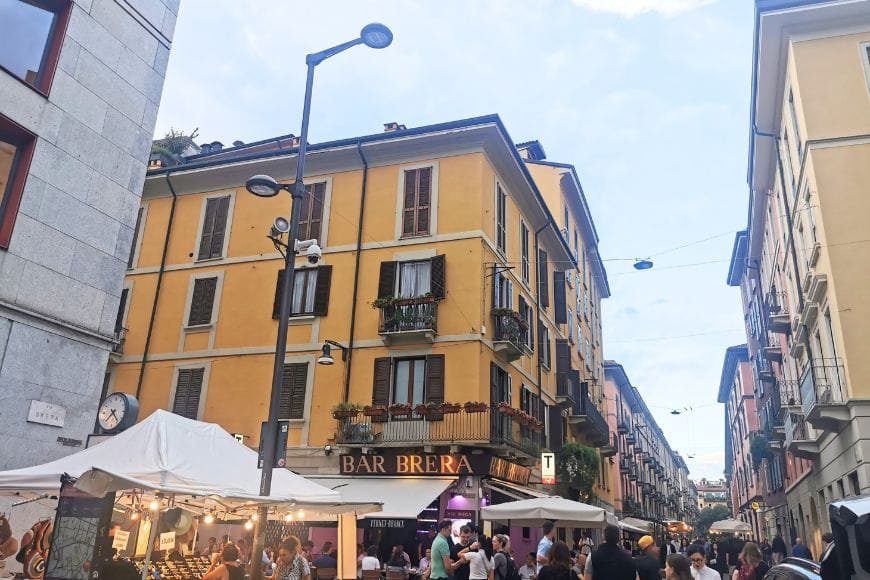
Start in Brera—Milan’s artistic heart. This neighborhood is gorgeous with narrow cobblestone streets, art galleries, antique shops, and cafe-lined squares. Just wandering is the attraction.
The Brera Botanical Garden (Via Brera 28) is free, peaceful, and almost unknown to tourists. It’s a tiny oasis perfect for a quiet moment before the day heats up.
San Maurizio al Monastero Maggiore (free entry!) is called “Milan’s Sistine Chapel” for good reason—the entire church is covered in stunning Renaissance frescoes by Bernardino Luini. It’s absolutely breathtaking and costs nothing. Go between 3-5 PM for the best light and smallest crowds.
Pro tip: Pinacoteca di Brera (Milan’s main art gallery) is free every first Sunday of the month. If your timing works out, definitely go. Otherwise, the €15 entry is skippable if you’re on a tight budget—you’ve already seen San Maurizio’s masterpieces for free.
Morning cost: €0
Lunch: University Area Cheap Eats (€6-10)
Head toward the university area (Città Studi), where students eat, which means cheap prices. Look for signs saying “menù studenti” or just follow the crowds of young people.
Mercato Comunale (covered market) has food stalls selling fresh pasta, sandwiches, and prepared foods for €5-8. Grab something to go and eat in a nearby park.
Alternative: Any trattoria near the university offers lunch specials (€8-12 for pasta + drink). Look for places with handwritten menus posted outside—that’s usually a good sign.
Lunch cost: €6-10
Afternoon: Cimitero Monumentale & Isola (Free)
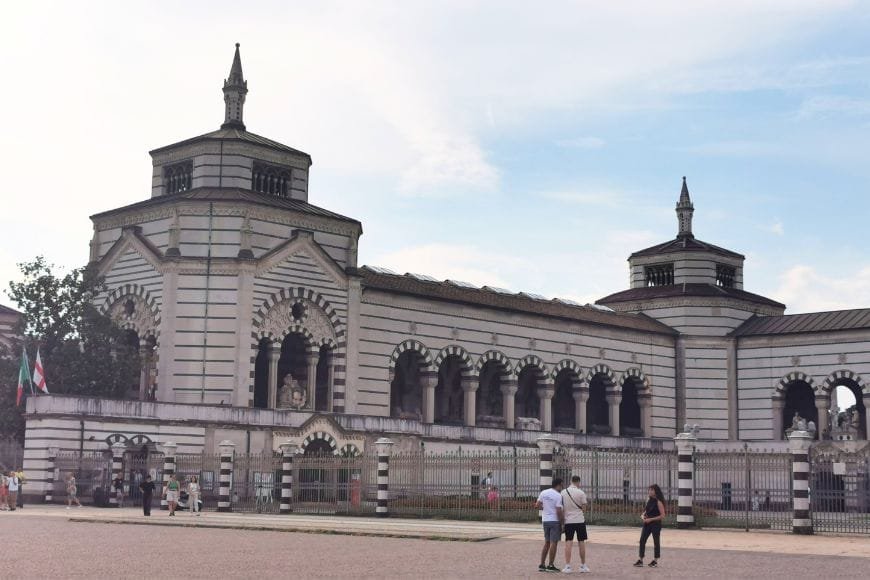
This might sound weird, but trust me: Cimitero Monumentale (Monumental Cemetery) is one of Milan’s most beautiful and underrated attractions. It’s essentially an outdoor sculpture museum with elaborate tombs designed by famous artists. Entry is completely free.
Take metro M5 to Monumentale (using your day pass). Spend 45 minutes wandering—it’s peaceful, artistic, and fascinatingly beautiful. Locals use it as a contemplative walking space, not just a cemetery.
From there, walk to the Isola district—Milan’s creative neighborhood. The streets are covered in incredible street art and murals, especially work by local artist Orticanoodles. Just wander Via Pola and the surrounding streets, looking up at the walls.
Isola has great coffee shops and bars where locals hang out. Frida (Via Antonio Pollaiuolo) is a bookshop-café with excellent coffee for €2-3 and a completely local vibe. Perfect afternoon break spot.
Corso Como is nearby—Milan’s design district. Window shop the concept stores (you’re not buying, but 10 Corso Como is architecturally stunning and fun to browse).
Afternoon cost: €0-3
Evening: Chinatown Budget Dinner (€8-12)
For dinner, head to Chinatown (Via Paolo Sarpi area, metro M2/M5 to Garibaldi). This is where Milan’s Chinese community actually lives and eats, which means authentic food at local prices—not tourist markup.
Restaurant picks:
- Ravioleria Sarpi: Fresh hand-made dumplings, €8-10 for a full meal
- Gong: Sichuan food, generous portions, €10-12
- Various bubble tea shops and bakeries for dessert (€3-5)
You’ll eat better and cheaper here than almost anywhere in central Milan. Plus, it’s a genuinely different cultural experience.
Alternatively, grab supplies from a supermarket (€6-8) and have wine and snacks in one of Milan’s parks while watching locals. This is lovely in good weather and saves even more money.
Evening cost: €8-12
Day 2 Total: €67
- Accommodation: €40
- Food: €14-22
- Transport: €3 (mostly walking, occasional metro)
- Attractions: €0
You’ve experienced authentic neighborhoods in Milan, seen incredible free art, discovered local food spots, and spent almost nothing. This is my favorite kind of Milan day!
Day 3: Day Trips or More Milan
Daily Budget: €65-75
Your third day offers flexibility based on weather, energy, and interests. Here are three options:
Option A: Lake Como Day Trip (€60-70 total)
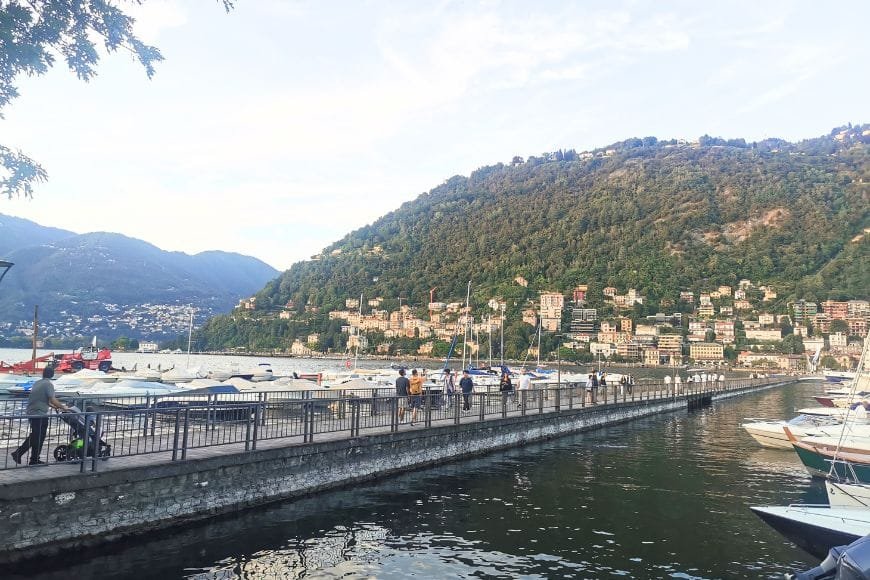
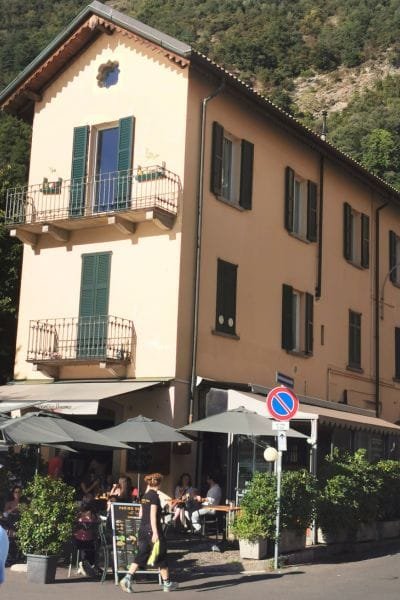
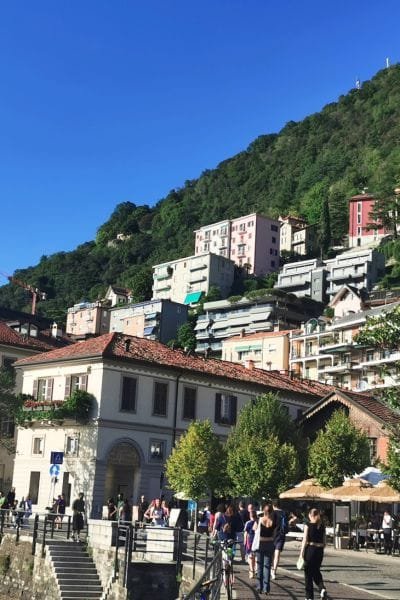
Take a regional train from Milano Centrale to Como San Giovanni (€5-10 each way, book at the station or online). Avoid the faster trains—they cost €15-20 each way. The regional train takes about an hour.
In Como, walk the beautiful lakefront (free), explore the old town streets (free), and maybe take the funicular up to Brunate (€6 return) for incredible views over the lake.
Budget lunch strategy: Pack sandwiches from a Milan supermarket before leaving, or grab pizza al taglio in Como (€5-7). The lakefront restaurants are expensive (€15-25 per person), so skip them.
Walk the lake, enjoy the scenery, take photos, and return to Milan by evening. Total cost including train, snacks, and maybe a gelato: €20-30 plus your regular accommodation.
Option B: Bergamo Day Trip (€60-70 total)
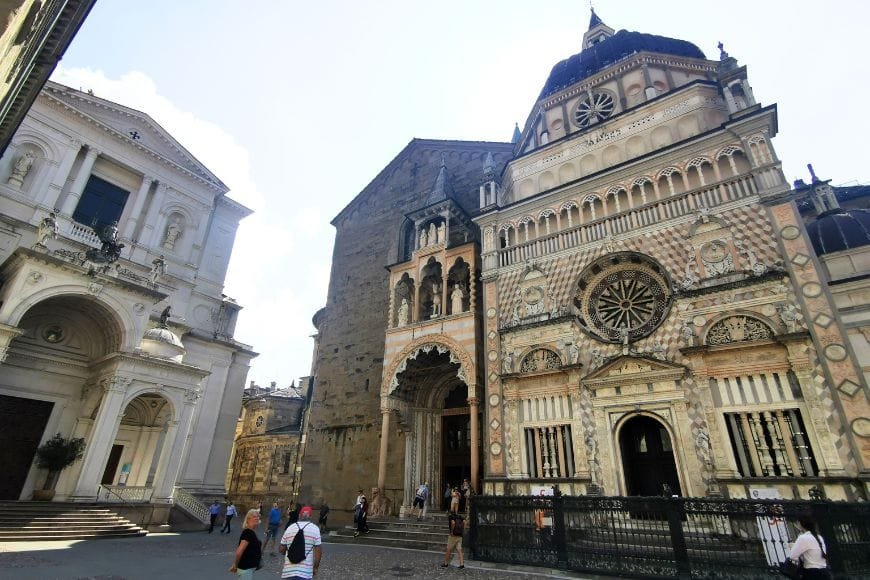
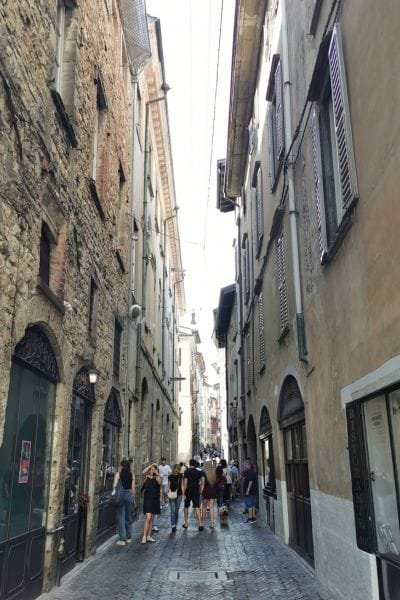
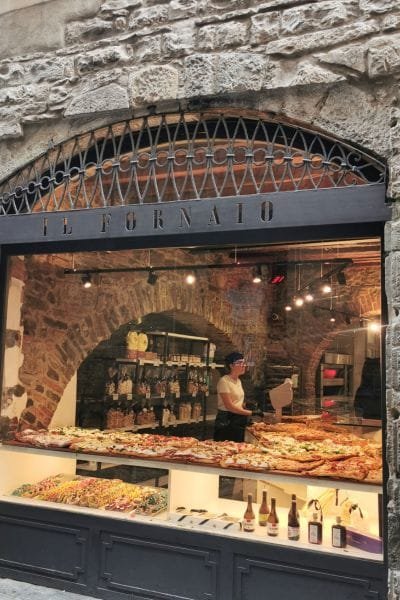
Train from Milano Centrale to Bergamo (€5-10 each way on regional trains, about 50 minutes).
Bergamo has two parts: Città Bassa (lower city, modern) and Città Alta (upper city, medieval). The Città Alta is the attraction—take the funicular up (€1.35 each way) and spend the day exploring winding medieval streets, city walls with panoramic views, and beautiful piazzas. All free!
The Basilica di Santa Maria Maggiore and Cappella Colleoni are free to enter and absolutely stunning. Walk the ancient Venetian walls for incredible views.
Budget lunch in Città Alta is tricky—most restaurants are tourist-priced (€15-20). Your best bet: grab supplies in the lower city before going up, or find a small deli/bakery selling sandwiches (€5-8).
Total day cost: €15-25, including transport and food.
Option C: More Milan (€45-55)
If you’re tired of day trips or the weather is bad, spend another day in Milan exploring what you’ve missed:
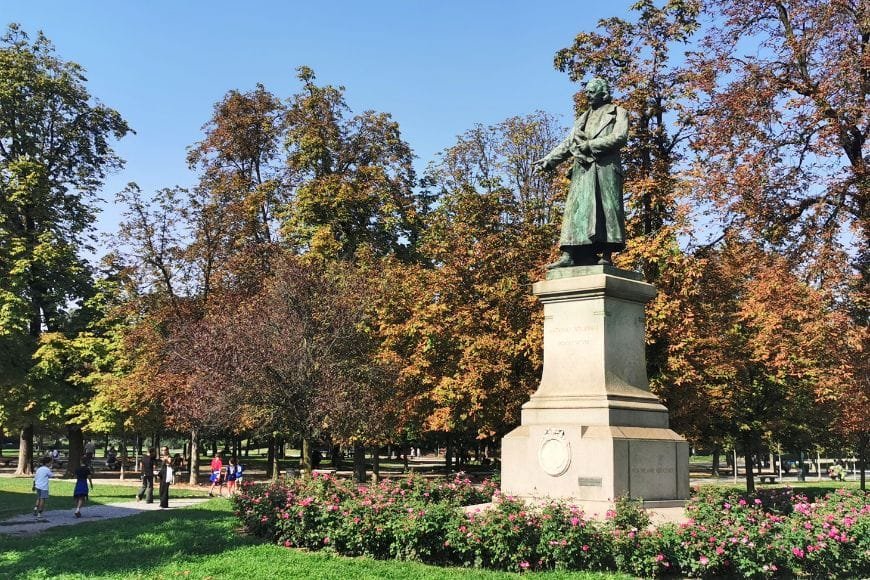
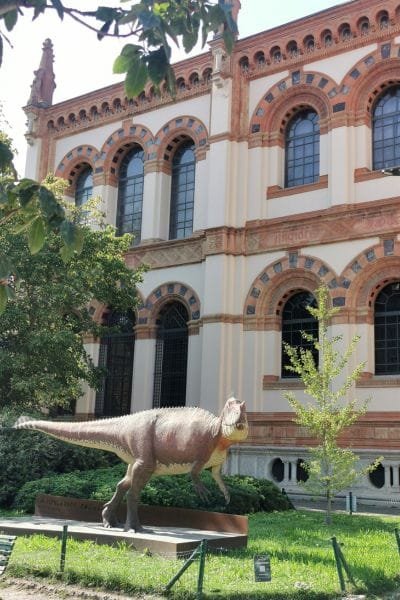
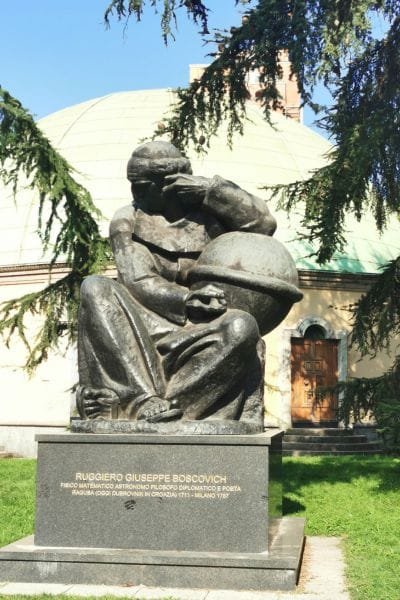
Morning: Giardini Pubblici and Villa Reale gardens (free)—Milan’s oldest park with a natural history museum (€5 if you want to go in, but the park itself is the real attraction).
Porta Venezia neighborhood walk—check out the colorful Via Lincoln (rainbow street) and Liberty-style architecture. This area has multicultural restaurants and local shops that tourists never see.
Afternoon: Browse Milan’s street markets. Viale Papiniano (Saturday mornings) has clothing, accessories, and food. Naviglio Grande (last Sunday of the month) has a famous antique market. Browsing is free, and deals can be found if you’re shopping.
Evening: Relax in a park with supermarket wine (€4-6 bottle) and snacks (€5-8). Watch the sunset, people-watch, and enjoy your final Milan evening without spending much.
Day 3 cost: €5-15 (just food and occasional transport)
Day 3 Total: €65-75
- Accommodation: €40
- Day trip/activities: €15-30
- Food: €10-15 (depending on day trip choice)
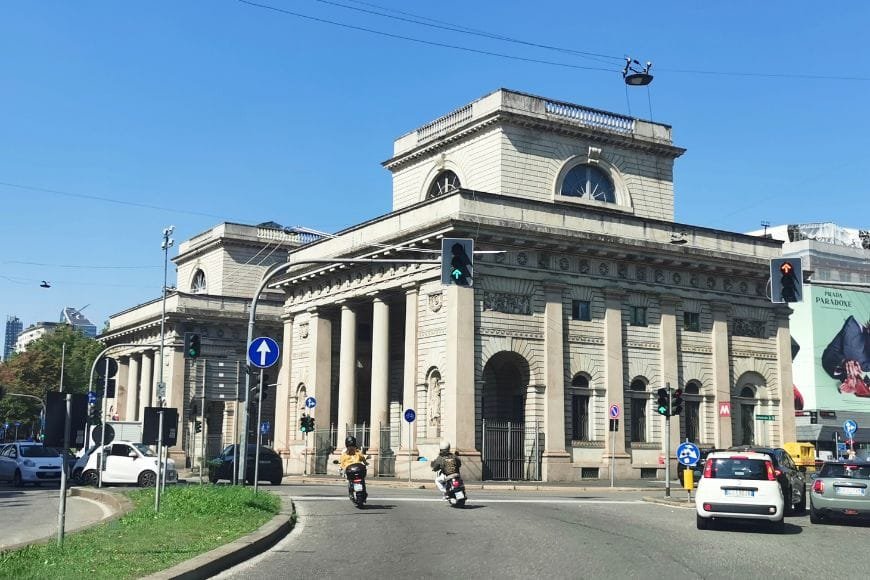
Budget Accommodation Guide
Finding affordable places to stay in Milan requires smart booking and knowing where to look. Here’s the real deal for 2025:
Best Budget Hostels (€40-50/night for dorm beds)
Ostello Bello (multiple locations): Milan’s most famous hostel chain. The atmosphere is social, the facilities are clean, and the locations are decent. The Grande location near Centrale station is most affordable (€40-45/night), while the Duomo location costs more (€50-60) but you’re in the absolute center.
YellowSquare Milan: Near Porta Venezia metro. Good social vibe, rooftop terrace, bar, and organized events. Dorm beds run €42-48. The neighborhood (Porta Venezia) is excellent—local restaurants, parks nearby, easy metro access.
Madama Hostel: Smaller, quieter hostel in the university area (Città Studi). Great if you want a more relaxed atmosphere. Dorm beds €38-43. The area is residential and safe, with cheap student restaurants everywhere.
Why hostel prices increased: Post-COVID, budget accommodation prices rose 50-70% across Italy. The €18-25/night hostel dorm days are gone. €40-50 is the new reality for decent hostels in major Italian cities in 2025.
Budget Hotels (€70-100/night for private rooms)
If you’re traveling as a couple or just want privacy, budget hotel private rooms aren’t much more expensive than hostels when split between two people.
Look for small hotels or B&Bs in these neighborhoods:
- Porta Venezia: Great location, local atmosphere, €70-90/night
- Città Studi: University area, very safe, cheap food nearby, €55-75/night
- Lambrate: Further out but well-connected by metro M2, €50-70/night
Airbnb vs. Hostels
Airbnb can work for couples or small groups (€50-80/night for the entire apartment in outer neighborhoods), but factor in cleaning fees that can add €30-50 to your total. For solo travelers, hostels are cheaper and offer built-in social opportunities.
Booking Tips
Book 2-3 months ahead for best prices, especially if visiting during Fashion Week (February/March and September/October) when prices spike 50-100%. Use Booking.com filters for “lowest price first” and check reviews carefully—anything under 7.5/10 is usually a red flag.
Consider staying Sunday-Thursday if possible—weekend rates run €10-20 higher per night.
Budget Food Guide: Where Locals Eat Cheap
Food is where many tourists blow their budget unnecessarily. Here’s how locals eat well for €20-25/day:
Breakfast: €2-4
Never eat breakfast at your hotel or hostel unless it’s included. Hotel breakfasts cost €8-12 and aren’t worth it.
Instead, do what Milanese do: walk to the nearest bar (Italian bars are cafés, not alcohol-focused), order a cappuccino and cornetto (€2.50-3), consume it standing at the counter, and leave. The same items cost €5-7 if you sit down.
Coffee culture tip: Cappuccino is a morning drink only. After 11 AM, locals switch to espresso. You’ll get judged if you order a cappuccino after lunch (not really, but you’ll stand out as a tourist).
Budget alternative: Buy croissants and fruit from a supermarket the night before (€2 total) and make instant coffee in your hostel.
Lunch: €6-12
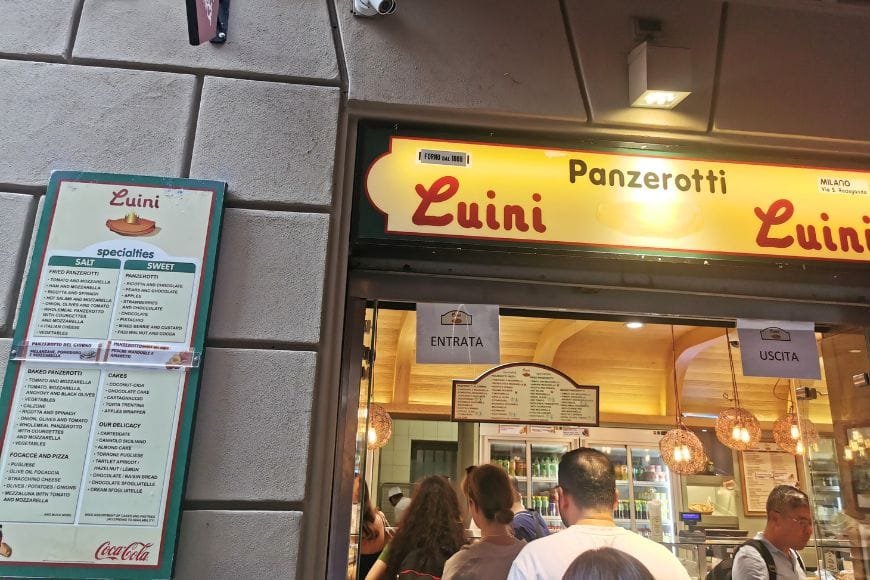
Pizza al taglio: Sold by weight at pizza shops. Point to what you want, they cut it, weigh it, and charge you.
Panzerotti at Luini: The famous spot (Via Santa Radegonda) sells fried dough pockets for €3.50. One is a snack, two is lunch.
University area canteens: Near Città Studi campus, look for places offering “menù studenti”—pasta + drink + coffee for €10-13. These aren’t exclusive to students; anyone can eat there.
Mercato comunale: Covered markets sell prepared foods, sandwiches, focaccia. €5-8 gets you a solid lunch to eat in a nearby park.
Supermarket picnic: Carrefour, Esselunga, or Pam stores sell excellent bread (€1-2), cheese (€3-5), salami (€2-4), tomatoes, and fruit. Make sandwiches and picnic in Parco Sempione or any park. Total cost: €6-8 for a generous lunch.
Dinner: €8-18
Aperitivo buffets (the hack every budget traveler needs to know): Between 6:30-9 PM, bars offer drinks (€8-12) with unlimited access to buffet food. The food quality varies from basic (olives, chips, focaccia) to substantial (pasta, pizza, salad, cheeses). Choose places with good spreads, and you’ve essentially bought dinner.
Aperitivo rules: Order a drink first (Aperol spritz is classic), then help yourself to food. Don’t pile your plate absurdly high—take reasonable amounts and go back multiple times.
Chinatown restaurants: Via Paolo Sarpi area has authentic Chinese restaurants where full meals cost €8-12. Ravioleria Sarpi, Gong, and dozens of others offer generous portions at local prices.
Residential trattorias: Avoid restaurants within sight of the Duomo or major tourist spots. Walk 10-15 minutes into residential neighborhoods (Porta Romana, Porta Venezia, Isola) and find trattorias where locals eat. Look for handwritten daily menus posted outside. Pasta dishes run €8-12, complete meals €15-18.
Cook at your hostel: Most hostels have kitchens. Buy pasta (€1-2), tomato sauce (€2-3), vegetables (€3-5), and cook for yourself. Dinner for two: €6-10 total.
Money-Saving Food Tips
- Free water: Tap water in Milan is safe and delicious. Every bar will give you free tap water if you ask (“acqua del rubinetto”). Refill your water bottle at public fountains (fontanelle) throughout the city.
- Supermarket wine: Decent bottles cost €4-6 versus €20-30 in restaurants. Buy wine at a supermarket, drink it in a park—perfectly legal and common.
- Standing vs. sitting: At bars, standing at the counter costs about half what sitting at a table costs. Locals stand, tourists sit.
- Lunch specials: Many restaurants offer cheaper lunch menus (€10-15) versus dinner prices (€18-25) for the same food.
- Best cheap food neighborhoods: Chinatown, Città Studi, Isola, Lambrate, Porta Romana. Avoid: Duomo area, Brera, Corso Como.
Free & Cheap Attractions
Milan’s best experiences don’t cost much. Here’s what’s free versus what’s worth paying for:
Completely Free
Churches:
- Duomo exterior
- San Maurizio al Monastero Maggiore (“Milan’s Sistine Chapel”)
- Basilica di Sant’Ambrogio
- Santa Maria delle Grazie exterior and cloisters
- San Lorenzo Maggiore and Colonne di San Lorenzo
Parks & Gardens:
- Parco Sempione
- Giardini Pubblici & Villa Reale gardens
- Brera Botanical Garden
- All neighborhood parks
Cultural Sites:
- Galleria Vittorio Emanuele II
- Castello Sforzesco courtyards (museums inside cost €5)
- Cimitero Monumentale
- Brera neighborhood wandering
- Fashion district window shopping
- Navigli canal walks
- Colonne di San Lorenzo (Roman columns)
Neighborhoods & Street Art:
- Isola district murals
- Chinatown exploration
- Porta Venezia Liberty architecture
- NoLo street art
- Via Lincoln rainbow street
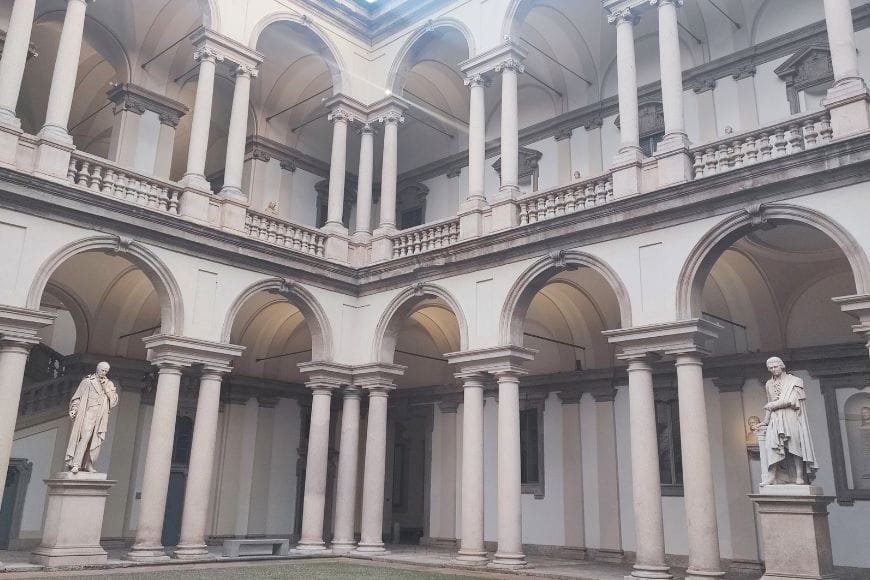
Cheap (Under €15)
- Pinacoteca di Brera
- Duomo rooftop
- Casa Museo Boschi Di Stefano
- Torre Branca
Worth Paying For (If Budget Allows)
If you have an extra €10-20 to spend, these are worth it:
- Pinacoteca di Brera: Excellent art collection if you’re into Italian Renaissance
- One nice dinner: Splurge on traditional Milanese cuisine at a proper trattoria (€25-30)
- Aperitivo with a view: Rooftop bars (€12-18 for drinks) offer special sunset experiences that can be worth the extra cost.
What You Can Skip on a Budget
Not everything in Milan deserves your limited euros. Here’s what I’d skip when visiting Milan cheaply:
- The Last Supper (€15 + booking fee): It’s beautiful, but the €15 admission plus the hassle of booking weeks in advance makes it skippable on a tight budget. You’ll see plenty of incredible art for free elsewhere.
- Duomo interior The exterior is more impressive, unless you’re fascinated by Gothic architecture.
- Duomo rooftop Nice views, but not essential. Free viewing points exist throughout the city.
- Expensive aperitivo bars: Some places charge €15-20 for drinks with mediocre buffets. Stick to neighborhood spots charging €8-12.
- Guided food tours (€60-100): You can explore Milan’s food scene yourself with this guide. No need to pay for organized tours.
- Designer shopping: Obviously, but the temptation is real. Window shopping is free and fun.
- Overpriced Galleria cafés: Coffee there costs €6-10 versus €1.50 around the corner.
- Museum audio guides: Use free apps or just appreciate the art without commentary.
- Taxis: Almost never necessary given Milan’s excellent public transport.
When to Splurge (If You Have €10-25 Extra)
One traditional dinner: Treat yourself to proper Milanese cuisine at a good trattoria. Ossobuco with risotto alla milanese is the local specialty (€18-25).
Torre Branca views: €6 for observation tower in Parco Sempione—cheap thrill with great views.
Brera art museum: €15 entry, excellent collection if you’re into art. Free first Sunday!
Aperitivo with a view: Rooftop bars (€12-18 for drinks) offer special sunset experiences that can be worth the extra cost.
Sample 3-Day Budget Summary
Here’s how it all adds up for your Milan 3 day budget trip:
Day Total Cost Highlights
| 🗓️ Day | 💶 Total Cost | 🎨 Highlights |
|---|---|---|
| Day 1 | €69 | 🏛️ Duomo di Milano, 🛍️ Galleria Vittorio Emanuele II, 🏰 Castello Sforzesco, 🌳 Parco Sempione, 🍹 Navigli aperitivo |
| Day 2 | €67 | 🎭 Brera District, ⛪ San Maurizio al Monastero Maggiore, ⚰️ Cimitero Monumentale, 🎨 Isola street art, 🥢 Chinatown dinner |
| Day 3 | €70 | 🚆 Lake Como or Bergamo day trip — or 🌿 explore more Milan neighborhoods and parks |
Average €69/day 3-day total: €206 including accommodation
What’s included:
- Hostel accommodation (shared dorm)
- All meals (breakfast, lunch, dinner)
- Public transport
- Free attractions plus occasional paid entry
What’s NOT included:
- Flights to/from Milan
- Travel insurance
- Shopping and souvenirs
- Alcohol beyond aperitivo drinks
- Expensive restaurants or paid tours
How to adjust:
Lower budget (€50-60/day):
- Stay in suburban hostels (€30-35/night)
- Cook most meals in the hostel kitchen
- Walk everywhere
- Skip all paid attractions
- Only free activities
Higher comfort (€90-100/day):
- Private room in budget hotel (€60-70/night when split with partner)
- More restaurant meals
- Occasional taxis
- Paid museums and attractions
- Nicer aperitivo spots
Extending to 4-5 days: Add €70 per day for Days 4-5. Visit more neighborhoods, take another day trip, or slow down and relax in parks. The daily average stays around €70-75.
Seasonal Budget Tips
When you visit, it affects your budget Milan experience significantly:
Spring (March-May): Best balance of weather and prices. Temperatures 15-22°C, occasional rain. Accommodation moderate, attractions less crowded. However, Fashion Week in February/March can spike prices 50-100%—check dates and book around it if possible.
Summer (June-August): Hot! 28-35°C makes midday walking uncomfortable, but accommodation prices drop as Italians vacation elsewhere. Locals flee in August—many restaurants close, but deals exist. Best for serious budget travelers who can handle heat.
Fall (September-November): Beautiful weather (15-23°C), autumn colors, comfortable walking. Another Fashion Week in September (price spike warning), but overall great season. October is perfect.
Winter (December-February): Cold (2-8°C) but magical. Christmas markets, festive atmosphere, and excellent hotel deals. January-February have the lowest prices. Bring warm layers. Some attractions have shorter hours.
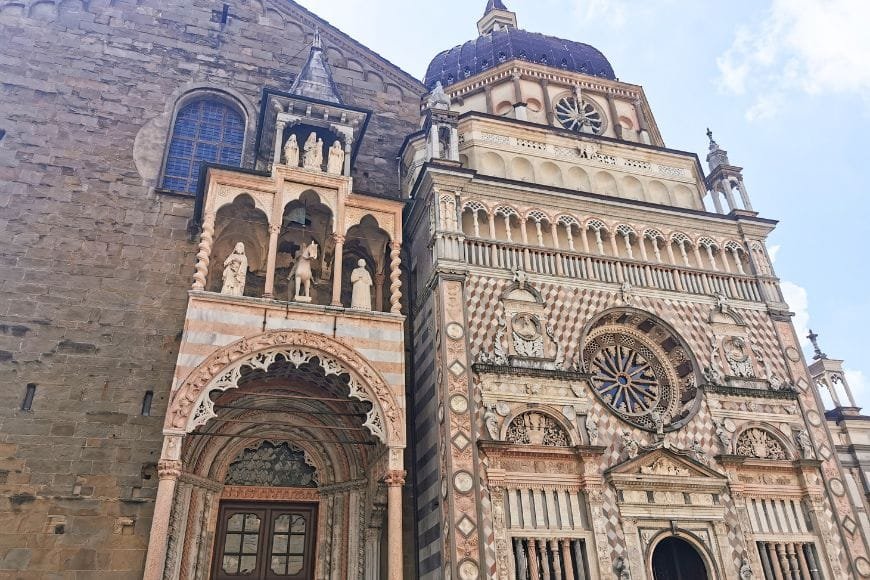
Avoid these dates for budget travel:
- Fashion Week (February/March and September/October)
- Design Week (April)
- Major holidays (Christmas, Easter, New Year’s)
Prices can double during these events. If you must visit then, book accommodation 3+ months ahead.
Budget Transportation Tips
Milan has excellent public transport, and using it smartly saves money:
Walking vs. Metro
Milan’s historic center is compact—you can walk from Duomo to Castello Sforzesco in 15 minutes, Duomo to Brera in 12 minutes, and Castello to Navigli in 25 minutes. Walk whenever possible to save money and see more.
Use the metro for:
- Getting to the accommodation outside the center
- Reaching distant neighborhoods (Isola, Lambrate, Città Studi)
- When your feet hurt
- Bad weather
ATM Public Transport
Milan’s transport system (ATM) includes metro, trams, and buses—all work on the same tickets.
Ticket options:
- Single ticket: €2.20, valid 90 minutes from first validation, unlimited changes
- 24-hour pass: €7, unlimited travel from first validation
- 3-day pass: €12 (€4/day)
- Weekly pass: €20 (only worth it if staying 7+ days)
Which to buy?
- If taking 3+ trips in a day, buy the day pass
- If mostly walking with 1-2 metro rides, buy single tickets
- Download the ATM Milano app to buy tickets on your phone (you need an Italian SIM or international data)
Buy tickets at metro stations (machines accept cards), tobacco shops (tabacchi), or newsstands. Validate them when boarding by tapping on the yellow/green readers.
BikeMi Bike Sharing
Milan’s bike-sharing system (BikeMi) works well. Day pass costs €6 for unlimited 30-minute rides (longer rides cost extra). Stations are everywhere. Good option if you’re comfortable biking in city traffic.
Airport to City Center (Cheaply)
From Malpensa Airport:
- Malpensa Shuttle bus: €10, 50 minutes to Centrale station. Runs every 20 minutes. This is your budget option.
- Train: €15, faster but pricier
From Linate Airport:
- Bus 73 or X73: Regular ATM bus for €2.20 (your single ticket covers it). 25 minutes to San Babila metro station.
- Airport bus: €6-8, faster and more comfortable
From Bergamo Airport (Orio al Serio):
- Bus to Centrale: €7-10, about an hour. This airport is technically Bergamo, not Milan, but budget airlines use it.
Skip Taxis (Usually)
Taxis in Milan are expensive—€15-20 minimum for even short rides. The metro is fast and goes everywhere you need. Only use taxis if:
- You’re arriving very late at night (post-midnight)
- You’re traveling with lots of luggage
- You’re in a group of 3-4 (cost split makes it reasonable)
Money-Saving Tips from a Local
After years in Milan, here are my best Milan budget tips:
Visit during shoulder season: March-May or September-November have moderate prices and good weather. Summer (June-August) sees cheaper accommodation but sweltering heat. Winter (December-February) is magical with Christmas markets, but cold.
Book accommodation far in advance: Prices increase as availability drops. Book 2-3 months ahead for best rates.
Stand at bars, don’t sit: Coffee and food cost 50-70% more if you sit versus standing at the bar. Locals stand.
Drink tap water: It’s safe, free, and available from fountains everywhere. Bring a reusable bottle.
Aperitivo instead of dinner: This is the ultimate budget hack. €8-12 drink + unlimited buffet = dinner.
Avoid tourist trap restaurants: If you can see the Duomo from the restaurant, it’s overpriced. Walk 10-15 minutes away.
Walk instead of metro: The historic center is small and walkable. Save metro tickets for longer distances.
Free museum days: The First Sunday of every month, many museums are free. Plan accordingly.
Visit during Fashion Week for free events: February/March and September/October have Fashion Week and Design Week. Accommodation prices spike, but many free exhibitions, installations, and events happen throughout the city.
Student discounts: If you have a valid student ID (ISIC or university ID), many museums offer 30-50% discounts.
Free walking tours: Several companies offer “free” walking tours (you tip at the end, suggested €10-15). Good for orientation and meeting other travelers.
FAQs About Visiting Milan on a Budget
Can you visit Milan on a budget?
Absolutely! Despite its luxury image, Milan can be surprisingly affordable. With free attractions like the Duomo exterior, Castello Sforzesco courtyards, and San Maurizio church, plus cheap eats and hostels, you can easily enjoy the city on €70–75 per day without missing the highlights.
What is the cheapest way to get around Milan?
Walking is free — and Milan’s city center is very walkable. For longer distances, grab a 24-hour metro and tram pass (€7). It covers unlimited rides and is much cheaper than taxis. If you plan day trips, regional trains booked on 👉 Omio offer great prices.
Is The Last Supper worth paying for on a budget trip?
If you’re an art lover — yes. But if you’re traveling strictly on a tight budget, you can skip it. There are many free Renaissance masterpieces in Milan’s churches and museums that cost nothing, like San Maurizio al Monastero Maggiore or Brera’s first Sunday free entry.
Where can I find cheap food in Milan?
Head to Chinatown, university districts, or Mercato Centrale for local meals between €6–12. For the best value, go for aperitivo — Milan’s happy hour tradition where drinks come with a full buffet, easily replacing dinner for €8–10.
What are the best free things to do in Milan?
Admire the Duomo from outside
Stroll through Galleria Vittorio Emanuele II
Explore Parco Sempione and Brera
Visit San Maurizio al Monastero Maggiore
Wander the Navigli canals at sunset
All completely free — and full of Milanese cha
Plan Smarter: Resources & Related Guides
Free Things to Do in Milan – Explore Milan’s cultural side without spending a cent
Weekend in Milan Itinerary – Perfect short-trip plan for culture lovers
Romantic Milan Itinerary – Explore Milan with your special someone
Milan to Lake Como by Car – Scenic drives, hidden lakeside stops & budget tips
Best Museums in Milan – From Renaissance art to design masterpieces
Best Places to Visit in Italy – Extend your adventure beyond Milan
Milan Travel Guide
Final Words
Milan doesn’t have to break your budget. With smart planning and local knowledge, you can experience this incredible city for €75 per day—accommodation, meals, transport, and attractions included.
The secret? Live like a local. Stand at neighborhood bars for a €1.50 coffee, use aperitivo buffets as dinner, explore free churches with masterpiece frescoes, and walk through residential neighborhoods tourists miss. Skip tourist traps near the Duomo and embrace authentic Milan.
You’re not missing out by traveling on a budget—you’re experiencing the real city. Follow this guide, book accommodation 2-3 months ahead, download offline maps, and embrace the hunt for genuine experiences over Instagram moments.
Now book that hostel, practice ordering coffee at the bar, and get ready for an incredible budget Milan adventure!
Buon viaggio!
Get our FREE Italy
Travel Guide
E-Book
This printable guide is your ultimate companion for exploring Italy, with insider tips, detailed itineraries, transportation advice, must-see attractions, and more.

💬 We’d love to hear from you!
Have questions, tips, or personal travel stories to share? Drop them in the comments below — your insights help fellow travelers plan their adventures too.
